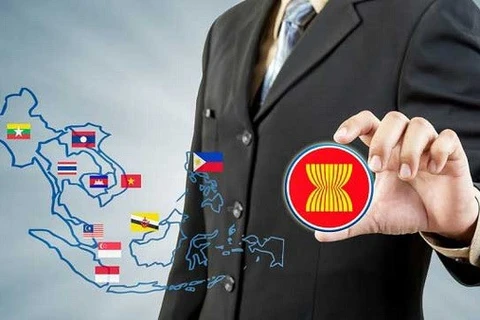Kuala Lumpur (VNA) – The ASEAN Economic Community (AEC) – a key pillar in the ASEAN Community which came into being on December 31, 2015 – has set a foundation for the start of a new chapter in economic integration in the Southeast Asian region.
According to Secretary-General of Malaysia’s Ministry of International Trade and Industry Rebecca Fatima Sta Maria, adopted by the ASEAN leaders in 2007, the AEC Blueprint highlights about 600 initiatives, including measures to create a single market and production base and a highly competitive economic region with equal economic development and deeper integration into the global economy.
The AEC Scorecard used to track the progress of implementing AEC measures of separate countries over the past eight years has been delivered at ASEAN summits.
She noted that nearly 96 percent of tax lines in ASEAN have been removed, enabling regional businesses to sell and buy almost all commodities without paying import tax.
However, to enjoy tax exemption, business players must abide by rules of origin and apply the Self-Certification in ASEAN to satisfy “Made-in-ASEAN” requirements, she recommended.
ASEAN member countries agreed to liberate services, including financial ones, while making it easier for the flow of skilled workers in the region and encouraging investment and consumer protection.
Between 2007 and 2014, the bloc’s gross domestic product (GDP) increased from 1.33 trillion USD to 2.57 trillion USD, total trade from 1.61 billion USD to 2.53 billion USD, and foreign direct investment (FDI) from 85 billion USD to 136 billion USD.
At the 27 th ASEAN Summit in Kuala Lumpur in November 2015, the ASEAN leaders adopted the AEC Blueprint 2025 to reiterate ASEAN’s continuous economic integration and ensure regional economic development is reliable and sustainable, Rebecca said.
The blueprint will focus on addressing non-tariff trade barriers and non-tariff trade measures as well as barriers arising from law, she said, adding the ASEAN Solutions and Settlements for Investments, Services and Trade (ASSIST) will be put into operation in the first quarter of 2016 to remove bottlenecks for ASEAN businesses.
She noted that the ASEAN’s Strategic Action Plan for Small and Medium-Sized Enterprises (SMEs) Development (SAP SMED) in 2016-2025 covers measures to build capacity for SMEs in applying information-technology and e-commerce, along with facilitating the connectivity network among businesses.
In addition to intra-bloc economic integration, ASEAN has been integrating deeper into the global economy via its engagement in the ASEAN+1 Free Trade Agreements and the Regional Comprehensive Economic Partnership (RCEP) – comprising of ASEAN member states and six FTA partners: Australia, China, India, Japan, the Republic of Korea, and New Zealand.-VNA

























